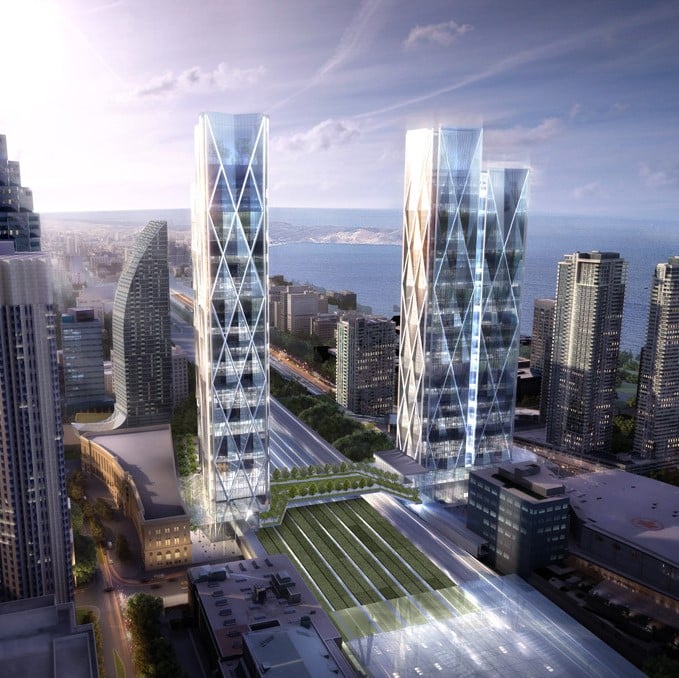- cross-posted to:
- politicalmemes
- justtaxland
- cross-posted to:
- politicalmemes
- justtaxland
Ok, but let’s let’s execute the landlords anyway. As a treat, you know?
In Canada the federal government is giving lots of incentives to build more housing. Basically stuff like rEmOvInG ReD tApE so the private sector can build more.
It’d be great if they actually spent money building housing. But it’s better than nothing, I guess.
The thing is that red tape also applies to public housing, too. Those incentives are for municipalities to remove local land use policies such as SFH zoning, parking minimums (like Toronto, Montreal, and Vancouver all removed recently), policies which would apply to public housing projects, too. Removing these NIMBY land use policies is a necessary pre-condition for both public and private housing.
In my old neighborhood, higher density new builds were more expensive than the single family homes they replaced. Historically, housing was most affordable when the provincial governments (with the help of the feds) built housing. I’d like to see that start again.
Increasing density is great for a bunch of reasons we probably agree on, but I don’t see it improving affordability without external pressure.
Except that any housing, market-rate or not, does empirically help with affordability:
But what happens to rents after new homes are built? Studies show that adding new housing supply slows rent growth—both nearby and regionally—by reducing competition among tenants for each available home and thereby lowering displacement pressures. This finding from the four jurisdictions examined supports the argument that updating zoning to allow more housing can improve affordability.
In all four places studied, the vast majority of new housing has been market rate, meaning rents are based on factors such as demand and prevailing construction and operating costs. Most rental homes do not receive government subsidies, though when available, subsidies allow rents to be set lower for households that earn only a certain portion of the area median income.
Policymakers have debated whether allowing more market-rate—meaning unsubsidized—housing improves overall affordability in a market. The evidence indicates that adding more housing of any kind helps slow rent growth. And the Pew analysis of these four places is consistent with that finding. (See Table 1.)
We study the local effects of new market-rate housing in low-income areas using microdata on large apartment buildings, rents, and migration. New buildings decrease rents in nearby units by about 6% relative to units slightly farther away or near sites developed later, and they increase in-migration from low-income areas. We show that new buildings absorb many high-income households and increase the local housing stock substantially. If buildings improve nearby amenities, the effect is not large enough to increase rents. Amenity improvements could be limited because most buildings go into already-changing neighborhoods or buildings could create disamenities such as congestion.
In all four places studied, the vast majority of new housing has been market rate
Doesn’t that mean prices stay the same? That doesn’t improve affordability.
Market-rate, as a term, just means that it’s governed by supply and demand and not externally subsidized. The rest of the text describes how loosening zoning laws spurs housing construction which helps with affordability.
The idea is that, if enough housing gets built, the market rate lowers. For instance, my city Montreal has a lower market rate than, say, San Francisco or Vancouver. Why? Higher supply and lower demand.
Or an even better example: Tokyo. Most populous metro area in the world, but it’s also stupidly easy to build apartments and other dense housing by right. The result? The “market rate” for housing in Tokyo is remarkably affordable, even to a minimum wage earner:
Two full-time workers earning Tokyo’s minimum wage can comfortably afford the average rent for a two-bedroom apartment in six of the city’s 23 wards. By contrast, two people working minimum-wage jobs cannot afford the average rent for a two-bedroom apartment in any of the 23 counties in the New York metropolitan area.
…
In Tokyo, by contrast, there is little public or subsidized housing. Instead, the government has focused on making it easy for developers to build. A national zoning law, for example, sharply limits the ability of local governments to impede development. Instead of allowing the people who live in a neighborhood to prevent others from living there, Japan has shifted decision-making to the representatives of the entire population, allowing a better balance between the interests of current residents and of everyone who might live in that place. Small apartment buildings can be built almost anywhere, and larger structures are allowed on a vast majority of urban land. Even in areas designated for offices, homes are permitted. After Tokyo’s office market crashed in the 1990s, developers started building apartments on land they had purchased for office buildings.
https://www.nytimes.com/2023/09/11/opinion/editorials/tokyo-housing.html


